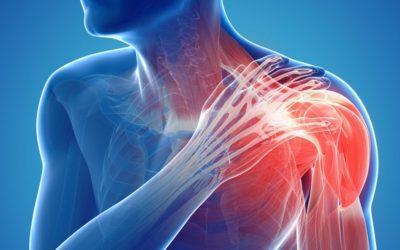Understanding the Root Cause.
Shoulder blade discomfort is a frequent condition that may interrupt everyday activities and reduce productivity. At our organization, we recognize the importance of identifying and resolving the root causes of this suffering. Poor posture, muscular stress, injury, or underlying medical issues are all common causes of discomfort behind the shoulder blade.
Postural Pitfalls: The Effects of Poor Alignment.
One of the biggest causes of shoulder blade discomfort is poor posture. In today’s digital world, when many of us spend hours bent over devices, maintaining an appropriate posture may be difficult. Slouching or rounded shoulders may result in muscular imbalances and tension, causing soreness behind the shoulder blade.
Prosoma 500mg is mostly composed of the active component carisoprodol. Carisoprodol is a muscle relaxant used to relieve muscular spasms and pain. It works by altering neuronal transmission in the central nervous system, which helps to relieve muscular discomfort and tension.
Unraveling muscle tension: The role of stress and overuse.
Muscle tension is another common cause of discomfort in this region. Tight or overused muscles around the shoulder blade may cause discomfort or acute pain. Stress, repeated actions, and poor lifting methods may all cause muscle tension and worsen the problem.
Exploring Injury and Trauma: The Impact on Shoulder Health.
An injury to the shoulder area, whether acute or chronic, may also cause discomfort under the shoulder blade. Trauma to the shoulder joint or surrounding tissues, whether caused by sports, accidents, or falls, may cause long-term pain. Rotator cuff injuries and shoulder impingement syndrome may also cause discomfort behind the shoulder blade.
Identifying Underlying Medical Conditions: The Importance of Diagnosis
In rare circumstances, shoulder blade discomfort may indicate underlying medical issues that require medical care. Conditions such as osteoarthritis, fibromyalgia, and gallbladder disease may cause referred pain in the shoulder blade region. Thus, obtaining a thorough assessment from a healthcare expert is critical for detecting and resolving any possible underlying concerns.
The path to relief: strategies for alleviating shoulder blade pain
While the reasons for shoulder blade pain differ, there are numerous ways that people may employ to relieve discomfort and improve recovery.
Prosoma 350mg is generally used as a muscle relaxant. Its primary element is carisoprodol, which acts by inhibiting pain signals between neurons and the brain. It is often recommended for the temporary alleviation of acute musculoskeletal pain or discomfort. Prosoma 350mg should be taken with caution and under the supervision of a healthcare expert, since it has habit-forming properties and may produce drowsiness or dizziness.
Embracing Ergonomics: Building a Supportive Workspace
Improving ergonomic settings in both work and home contexts may dramatically minimize stress on the shoulders and upper back. Investing in an ergonomic chair, setting the monitor height to eye level, and taking regular pauses to stretch will help reduce posture difficulties and shoulder blade discomfort.
Prioritizing Postural Awareness via Mindful Movement and Alignment
Developing postural awareness is critical for avoiding and treating shoulder blade discomfort. Mindful movement practices such as yoga or Pilates may assist in strengthening the muscles that maintain good posture and promote spinal alignment. Regular stretching exercises targeting the chest, shoulders, and upper back may also improve flexibility and ease stress in the shoulder blade region.
Incorporating Therapeutic Interventions: Massage and Physical Therapy.
Massage treatment and physical therapy may help relieve muscle tension and promote relaxation in the shoulder blade area. Deep tissue massage, myofascial release, and trigger point treatment are all techniques that may relieve pain by targeting particular regions of tension. Furthermore, physical therapy exercises designed to strengthen and stabilize the shoulder joint may improve mobility while lowering the risk of future injuries.
Seeking Professional Advice: Consulting with Healthcare Providers
If shoulder blade discomfort continues or is accompanied by other symptoms, it is critical to seek medical attention. Orthopedic experts, physical therapists, and chiropractors may do extensive exams to pinpoint the source of the pain and provide specific treatment regimens based on individual requirements. Furthermore, diagnostic imaging, such as X-rays or MRI scans, may be used to evaluate the structural integrity of the shoulder joint and surrounding tissues.
Empowering Wellness: Taking Charge of Shoulder Health.
In conclusion, alleviating discomfort beneath your shoulder blade requires a multimodal strategy that treats both symptoms and underlying reasons. Individuals may restore comfort and mobility in their shoulder area by focusing on postural awareness, adopting therapeutic treatments, and seeking expert advice as needed. Remember that proactive self-care methods and dedication to holistic well-being are essential for achieving long-term alleviation and optimal shoulder health.





